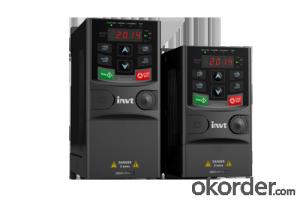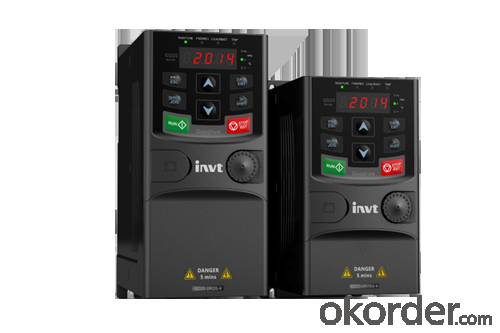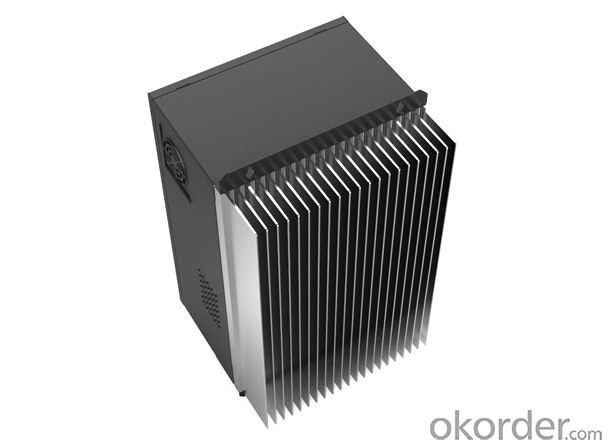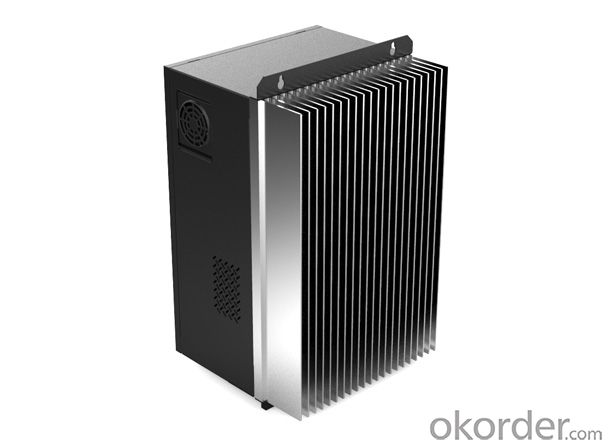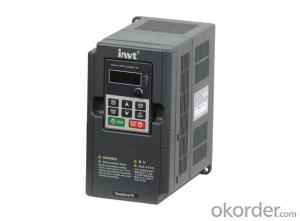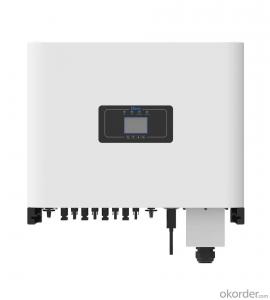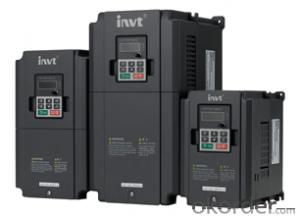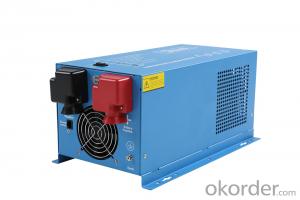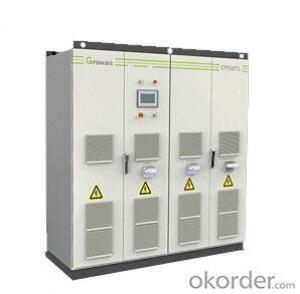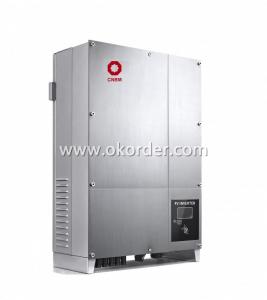Goodrive20 High Performance Mini Vector Solar Inverter for Ebay
- Loading Port:
- China main port
- Payment Terms:
- TT OR LC
- Min Order Qty:
- 10 pc
- Supply Capability:
- 10000 pc/month
OKorder Service Pledge
OKorder Financial Service
You Might Also Like
Goodrive20 High Performance Mini Vector Inverter
Specification
As a kind of mini general vector inverters, Goodrive20 series inverters adopt international advanced vector control algorithm and possess excellent functions; compatible with wall and rail installation, smaller and space-saving, Goodrive20 series inverters are high performance mini products for small power market.
FuturesNew structure design
1. Mini design, smaller installation space;
2. Compatible with rail and wall installation, flexible installation manner;
3. Available multi-inverter in parallel installation, more effective space-saving.
Easy maintenance
1. External keypad;
The standard membrane keypad supports external LED keypad and facilitates on-site applications; support external LED keypad with parameter copying, the two-keypad operating functions are convenient for commissioning control;
2. Swapple cooling fan, easy maintenance.
Reliable QA
1. The product design strictly follows IEC international standards and passes the CE test;
2. Advanced thermal technology makes exact thermal design.
Excellent performance

FAQ
Q 1. What’s the payment term?
A. We accept TT,30% deposit and 70% balance against copy of BL
Q 2. How’s the delivery time?
A. usually it will take about 25 days for production
Q 3. Tell me the standard of package?
A. For the small capacity, it use carton, but for big capacity, we will use strong wooden case for protection.
- Q: What is the maximum number of MPPT inputs in a solar inverter?
- The maximum number of MPPT inputs in a solar inverter can vary depending on the model and manufacturer. However, it is common to find solar inverters with a maximum of two or four MPPT inputs.
- Q: What is the role of anti-islanding protection in a solar inverter?
- The role of anti-islanding protection in a solar inverter is to ensure the safety of electrical grid workers by preventing the solar inverter from energizing the grid during a power outage. It is designed to detect grid failures and immediately disconnect the solar system from the grid, avoiding a potentially dangerous situation known as islanding. This protection feature helps maintain the stability and integrity of the electrical grid and protects both the grid workers and the solar system itself.
- Q: Can a solar inverter be used for both single-phase and three-phase applications?
- No, a solar inverter cannot be used for both single-phase and three-phase applications. Different types of inverters are designed specifically for either single-phase or three-phase systems, as they have different voltage and power requirements.
- Q: Can a solar inverter be installed in a multi-storey building?
- Yes, a solar inverter can be installed in a multi-storey building. The installation of a solar inverter in a multi-storey building follows the same principles as in any other building. The solar panels are typically installed on the rooftop or any other open area where they can receive maximum sunlight. The generated DC power from the solar panels is then converted into AC power by the solar inverter. In a multi-storey building, the solar inverter can be installed either on the rooftop or in a dedicated room or space on one of the floors. The installation location should be chosen based on factors such as ease of access, ventilation, and proximity to the solar panels. It is important to ensure that the inverter is installed in a safe and secure location that complies with local building codes and regulations. Additionally, the wiring and cabling required for connecting the solar panels to the inverter should be properly installed, taking into consideration the vertical distance between the panels and the inverter. Adequate protection measures should also be taken to prevent any damage or electrical hazards during the installation process. Overall, with proper planning and installation techniques, a solar inverter can be easily installed in a multi-storey building, helping to harness solar energy and reduce electricity costs for the residents or occupants.
- Q: How does a solar inverter handle fluctuations in solar panel output?
- A solar inverter handles fluctuations in solar panel output by continuously monitoring the voltage and current from the panels. It adjusts the input parameters to maintain a stable output power, compensating for variations in sunlight intensity, temperature changes, and other environmental factors. This ensures a consistent and reliable supply of electricity from the solar panels to the connected electrical load or the grid.
- Q: What is the role of a power management system in a solar inverter?
- The role of a power management system in a solar inverter is to efficiently convert and manage the electricity generated from solar panels. It regulates the flow of power, optimizes energy production, and ensures the safe and reliable operation of the solar inverter system. Additionally, it provides protection against overvoltage, overcurrent, and other electrical faults, maximizing the overall performance and longevity of the system.
- Q: What are the methods of photovoltaic grid-connected inverter control
- Sine wave output inverter control integrated circuits, sine wave output of the inverter, the control circuit can be used microprocessor control, such as INTEL company produced 80C196MC, Motorola produced MP16 and MI-CROCHIP company PIC16C73 and so on, these single-chip microcomputer has a multi-channel PWM generator,
- Q: The working principle of photovoltaic grid - connected inverter
- In the small-capacity inverter generally push-pull inverter circuit, full-bridge inverter circuit and high-frequency step-up inverter circuit three, push-pull circuit, the step-up transformer neutral plug connected to the positive power supply, two power Alternating current, the output to get AC power, due to the power transistor to ground, drive and control circuit is simple, and because the transformer has a certain leakage inductance, can limit the short circuit current, thus improving the reliability of the circuit. The disadvantage is the low utilization of the transformer, driving the emotional load is poor.
- Q: What are the key factors affecting the lifespan of a solar inverter?
- The key factors affecting the lifespan of a solar inverter include the quality of components used in its manufacturing, the design and construction of the inverter, the operating conditions and environment it is subjected to, and the maintenance and care it receives throughout its lifespan.
- Q: Can a solar inverter be used with a net metering system?
- Yes, a solar inverter can be used with a net metering system. A solar inverter is an essential component of a solar power system as it converts the direct current (DC) generated by solar panels into usable alternating current (AC) electricity. Net metering allows for the excess electricity produced by the solar panels to be fed back into the grid, resulting in credit or compensation from the utility company. The solar inverter facilitates this process by ensuring that the electricity generated by the solar panels is synchronized with the grid, allowing for seamless integration and net metering.
Send your message to us
Goodrive20 High Performance Mini Vector Solar Inverter for Ebay
- Loading Port:
- China main port
- Payment Terms:
- TT OR LC
- Min Order Qty:
- 10 pc
- Supply Capability:
- 10000 pc/month
OKorder Service Pledge
OKorder Financial Service
Similar products
Hot products
Hot Searches
Related keywords
